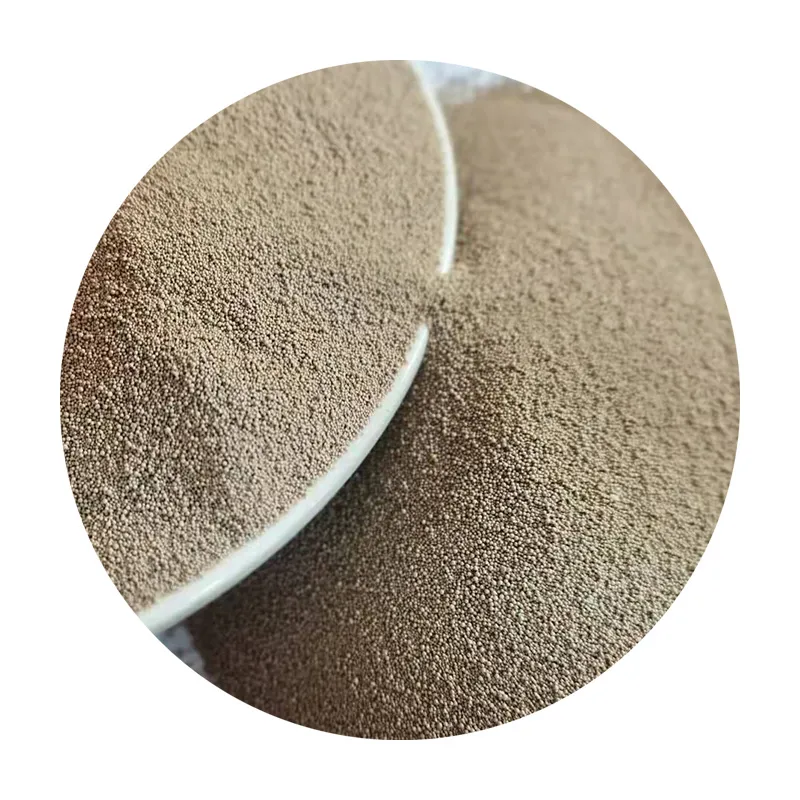The evolution of foundry sand has reached a transformative milestone with the advent of ceramic foundry sand, a material engineered to withstand extreme thermal and mechanical stresses. Unlike traditional silica sand, which degrades rapidly under high temperatures, ceramic foundry sand retains its structural integrity even at 1,500°C, making it ideal for high-precision applications like automotive engine blocks or aerospace components. Its spherical grain shape ensures uniform compaction in molds, reducing gas defects and improving surface finish. For industries prioritizing consistency, this sand minimizes waste by enduring up to 10 times more casting cycles than conventional alternatives. Additionally, its low thermal expansion coefficient prevents mold cracking, a common issue with types of sand used in foundry like chromite or olivine. By integrating ceramic foundry sand into green sand systems, manufacturers achieve higher yield rates and lower environmental footprints, aligning with global sustainability goals.

Why Ceramic Sand Outperforms Traditional Foundry Sand
When comparing types of foundry sand, ceramic foundry sand emerges as a superior choice due to its unmatched thermal stability and reusability. Traditional green sand—a blend of silica sand, clay, and water—loses binding efficiency after repeated use, leading to frequent replacements. In contrast, ceramic foundry sand requires no binders, as its inherent refractory properties ensure cohesion. This reduces production downtime and material costs by up to 40%. For intricate castings, such as turbine blades or hydraulic valves, its fine grain distribution captures intricate details without compromising mold strength. Furthermore, unlike silica-based foundry sand for sale, ceramic variants generate minimal dust, enhancing workplace safety. Foundries adopting this innovation report 30% faster cooling times and 15% lower energy consumption, proving its role as a game-changer in modern metalworking.
Exploring the Diverse Types of Sand Used in Foundry Applications
Understanding types of sand used in foundry is critical for optimizing casting quality. While silica sand dominates due to its affordability, its limitations in high-temperature environments have spurred demand for advanced alternatives. Ceramic foundry sand, categorized under synthetic sands, offers tailored solutions for specific alloys. For example, zircon-based ceramic sand excels in steel foundries, while alumina variants are preferred for aluminum castings. Compared to natural foundry sand like river or lake sand, ceramic options eliminate impurities such as sulfides or organics, ensuring defect-free outputs. Hybrid systems combining ceramic foundry sand with reclaimed green sand further enhance cost-efficiency. This versatility makes it a staple in industries ranging from artisanal jewelry casting to heavy machinery production, where precision and repeatability are non-negotiable.
Sustainable and Cost-Effective: The Case for Foundry Sand for Sale
Investing in foundry sand for sale with ceramic properties delivers long-term economic and environmental benefits. Traditional sand mining depletes natural resources and generates non-recyclable waste, whereas ceramic foundry sand is manufactured from industrial byproducts like bauxite or kaolin, aligning with circular economy principles. Its reusability slashes landfill contributions by over 70%, a critical factor for eco-certified foundries. Bulk purchasing of ceramic foundry sand also stabilizes supply chains, as its extended lifecycle reduces procurement frequency. For small-scale foundries, modular sand regeneration systems allow partial ceramic sand integration without overhauling existing infrastructure. With global regulations tightening on silica dust emissions, transitioning to ceramic foundry sand future-proofs operations while maintaining competitive pricing.
FAQs: Ceramic Foundry Sand and Green Sand Casting
How does ceramic sand improve casting surface finish?
Ceramic foundry sand’s spherical grains and uniform size distribution minimize metal penetration into molds, resulting in smoother surfaces and reduced post-casting machining.
Is ceramic sand compatible with existing green sand systems?
Yes. Ceramic foundry sand can be blended with traditional green sand to enhance performance gradually, allowing foundries to transition without downtime.
What industries benefit most from ceramic foundry sand?
Automotive, aerospace, and energy sectors rely on ceramic foundry sand for high-integrity castings, but even art foundries use it for detailed sculptures.
How does ceramic sand reduce environmental impact?
By reusing ceramic foundry sand up to 100 times and sourcing it from recycled materials, foundries cut waste and lower carbon emissions significantly.
Can ceramic sand handle large-scale castings?
Absolutely. Its high refractoriness and thermal stability make ceramic foundry sand suitable for both small precision parts and massive industrial components.
Elevate Your Casting Quality Today
Upgrade to premium ceramic foundry sand and experience unparalleled durability, precision, and sustainability. As a trusted supplier of foundry sand for sale, we guarantee competitively priced, high-performance solutions tailored to your needs. Visit our website to explore our catalog and place your order. Transform your foundry operations—choose innovation, choose reliability.
Next:Resin Coated Sand: The Key to High-Quality Castings
